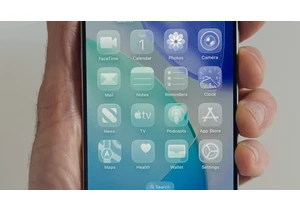LG's 27-inch 1440p UltraGear OLED monitor (model 27GX790A) is as close to gaming nirvana as fps-hungry players can get — for now, anyway. It has a 480Hz refresh rate, allowing it to actually display up to 480 fps for insanely fast-paced shooters, along with a low 0.03ms response time. And it supports DisplayPort 2.1, which offers higher bandwidth than typical DisplayPort 1.4 ports, so it doesn't need to use Display Stream Compression (DSC) like most other gaming displays. Together with NVIDIA G-Sync and AMD FreeSync Premium Pro technology, both of which will help to reduce screen tearing, the UltraGear 27 has pretty much everything you'd want in a high-end gaming display.
But given its high $1,000 retail price (though it's currently on sale for $800), the UltraGear 27 clearly isn't meant for most people. You'll absolutely need a powerful GPU and CPU to get close to seeing 480 fps in 1440p. And, let's be honest, very few people will even see the difference between 480Hz and more affordable 120Hz to 240Hz screens. The LG 27GX790A is for the true sickos.
I've tested plenty of high refresh rate screens in my time, from gaming laptops to a wide variety of monitors. I distinctly remember the excitement around 120Hz LCDs at CES 2010, and I definitely noticed the difference between those screens and standard 60Hz displays at the time. Shooters just looked smoother and felt more responsive. Then there was the leap to 240Hz screens, which was noticeable but not nearly as impressive as the arrival of OLED gaming displays with better black levels and astounding contrast.
Then came 360Hz screens, which, to be honest, didn't feel like a huge leap over 240Hz. Our eyes can only see so much after all, especially if you're moving beyond your peak gaming years. So I didn't really expect to be wowed by the UltraGear 27 — I figured it would be yet another solid OLED monitor, like the 27-inch 4K Alienware we recently reviewed.
But after spending plenty of time with the UltraGear 27 on my gaming PC, powered by an NVIDIA RTX 5090 and AMD's Ryzen 9 9950X3D, I noticed something strange. While I couldn't really see a major difference between its 480Hz screen and my daily driver, the 240Hz Alienware 32-inch QD-OLED, I could feel it.
What's good about the LG UltraGear 27?
The first time the UltraGear 27 truly clicked for me — the point where I finally understood the hype around 480Hz displays — was during a Rocket League match. I noticed that the longer I played, the more I reached a flow state where I could easily read the position of the ball, re-orient the camera and zip off to intercept. It almost felt like there was a direct connection between what my brain wanted to do, and what was actually happening on the screen. I forgot about the Xbox Elite controller in my hand, and the desk clutter in my office. The real world melted away — I was fully inside Rocket League's absurd soccer arena. When the match ended, it took me a few minutes to reacclimatize to reality.
Rocket League's fast motion and lack of downtime made it the ideal introduction to super-high frame rates. I was also easily able to reach 480 fps in 1440p with my system's hardware, but you'll still easily be able to see upwards of 300 fps with older GPUs, especially if you bump down to 1080p. To be clear, this monitor is pretty much wasted on older and budget video cards.
I noticed a similarly transcendent flow state as I got back into Overwatch 2, a game I gave up on years ago. The UltraGear 27 shined best when I was playing fast-paced characters like Tracer, Genji and Lucio, since I had a better sense of space during heated matches. But it also helped with more accurate shots when sniping with the likes of Hanzo and Widowmaker.
Beyond the seemingly metaphysical benefits of its 480Hz screen, the UltraGear 27 is also simply a great OLED monitor. Black levels are wonderfully dark, and it can also achieve slightly brighter highlights (up to 1,300 nits) than most OLEDs in small areas. Graphically rich games like Clair Obscur: Expedition 33 practically leap off the screen, thanks to its excellent 98.5 percent DCI-P3 color accuracy. The UltraGear 27 doesn't use a QD-OLED screen like Alienware's latest models, but its color performance doesn't suffer much for it.
If you've got a PlayStation 5 or Xbox Series X around, the UltraGear 27's two HDMI 2.1 ports will also let them perform at their best. While there are no built-in speakers, the display does include a headphone jack with support for DTS technology for spatial audio like most gaming monitors. It's also a 4-pole connection, so you can plug in headphones with microphones as well. For accessories, there are two USB 3.0 Type A ports, along with an upstream USB connection for your PC.
The UltraGear 27 doesn't look particularly distinctive when it's turned off, but it's hard to ask for much flair when it does so much right. Its nearly borderless bezel makes the screen practically float in the air, and you can also easily adjust its height and angle to suit your needs.
What's bad about the UltraGear 27?
The biggest downside with the UltraGear 27 is its $1,000 retail price. While it's nice to see it already falling to $800, it's still absurdly high compared to most 27-inch 1440p monitors. If you want to save some cash, LG's 27-inch 240Hz UltraGear is still a very good option. But if you're in the market for a 480Hz display, you'll basically have to live with paying a ton. For example, ASUS's ROG Swift 27-inch OLED is still selling for $1,000.
Should you buy the UltraGear 27?
If you're an esports player, or a gamer who demands the highest framerates no matter the cost, the UltraGear 27 is an excellent OLED monitor. But I think most players would be perfectly fine with a cheaper 240Hz screen. Even if you can easily afford the UltraGear 27, it's also worth considering larger screens like the Alienware 32-inch 4K QD-OLED. You'll still get decently high frame rates, but you'll also get a screen that's more immersive for ogling the graphics in Clair Obscur.
Wrap-up
With Samsung teasing a 500Hz OLED gaming screen, there's clearly still a demand for insanely high refresh rates. If you absolutely must have that fix, the UltraGear 27 was made for you. It has all of the benefits of OLED, and with the right title, it might help you achieve a new level of gaming transcendence.
This article originally appeared on Engadget at https://www.engadget.com/gaming/lg-27-ultragear-oled-review-i-finally-get-the-480hz-gaming-hype-123042162.html?src=rss https://www.engadget.com/gaming/lg-27-ultragear-oled-review-i-finally-get-the-480hz-gaming-hype-123042162.html?src=rssZaloguj się, aby dodać komentarz
Inne posty w tej grupie






One thing I need to make clear right from the start: this is a review of Norton VPN (formerly Norton Secure VPN, and briefly Norton Ultra VPN) as a standalone app, not of the VPN feature in the Nor

When Nintendo announced that it was adding GameCube gam
